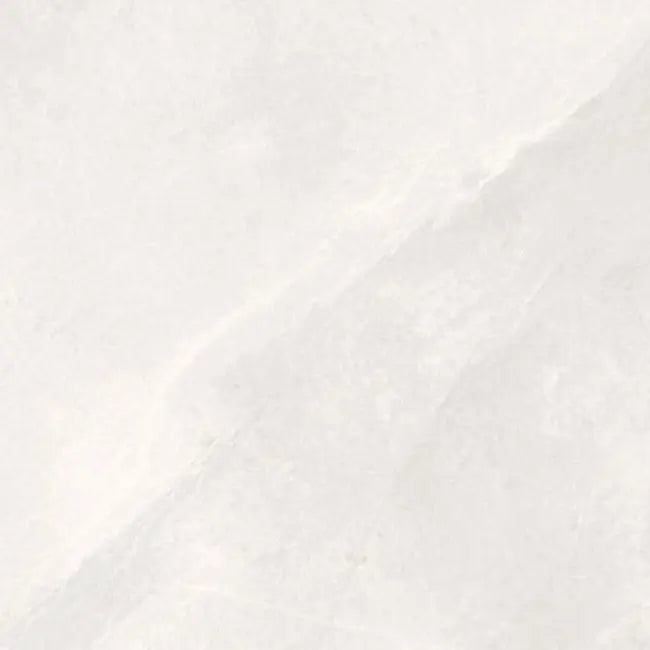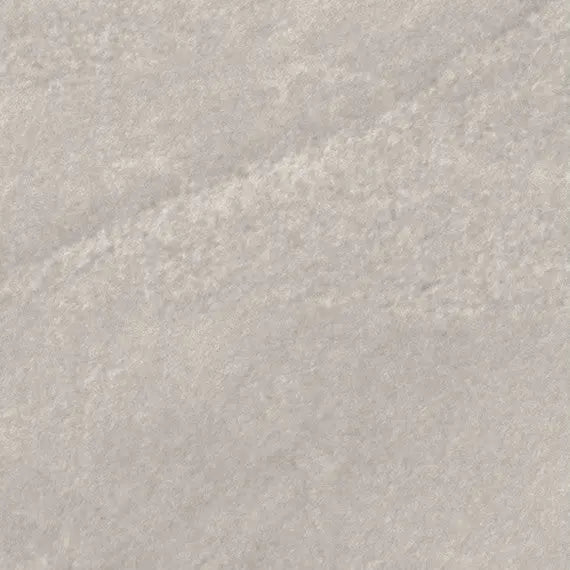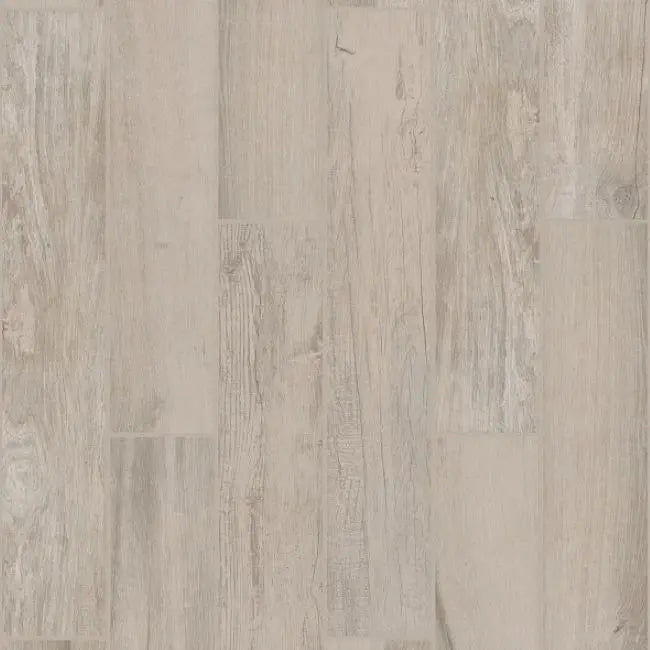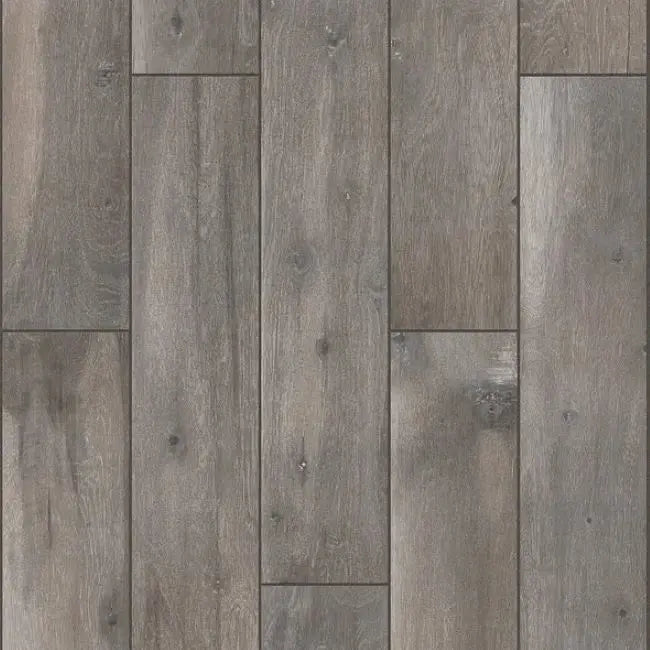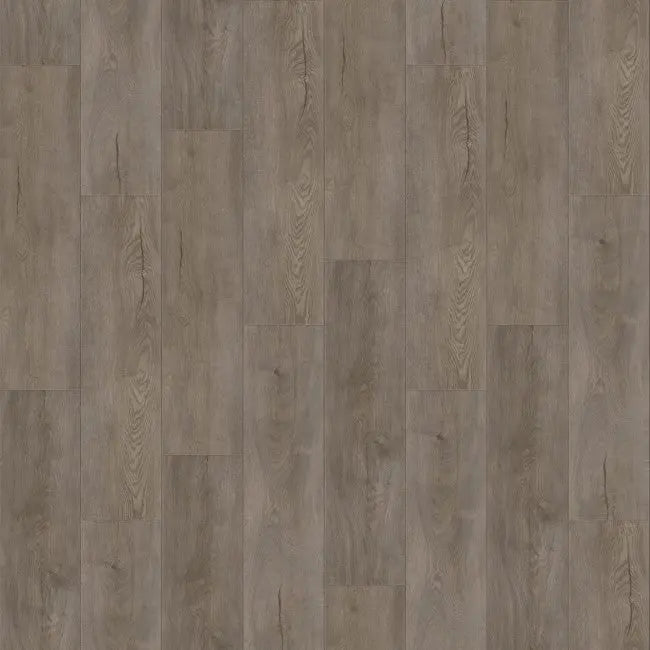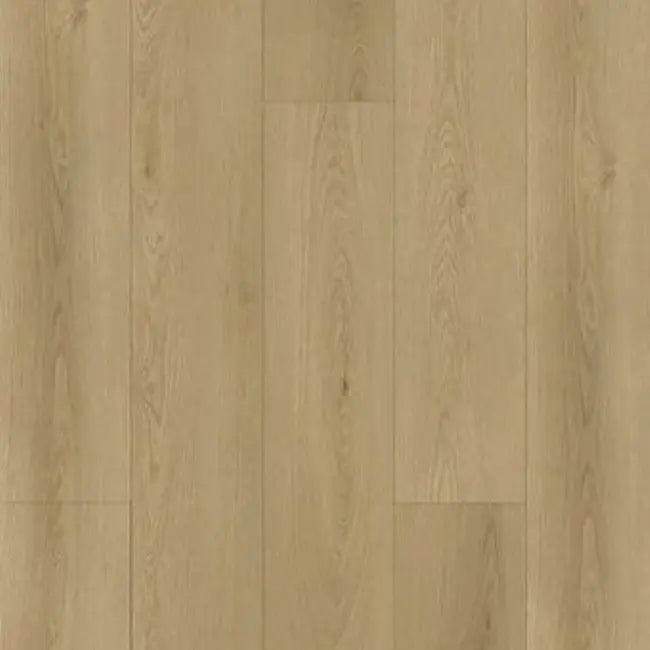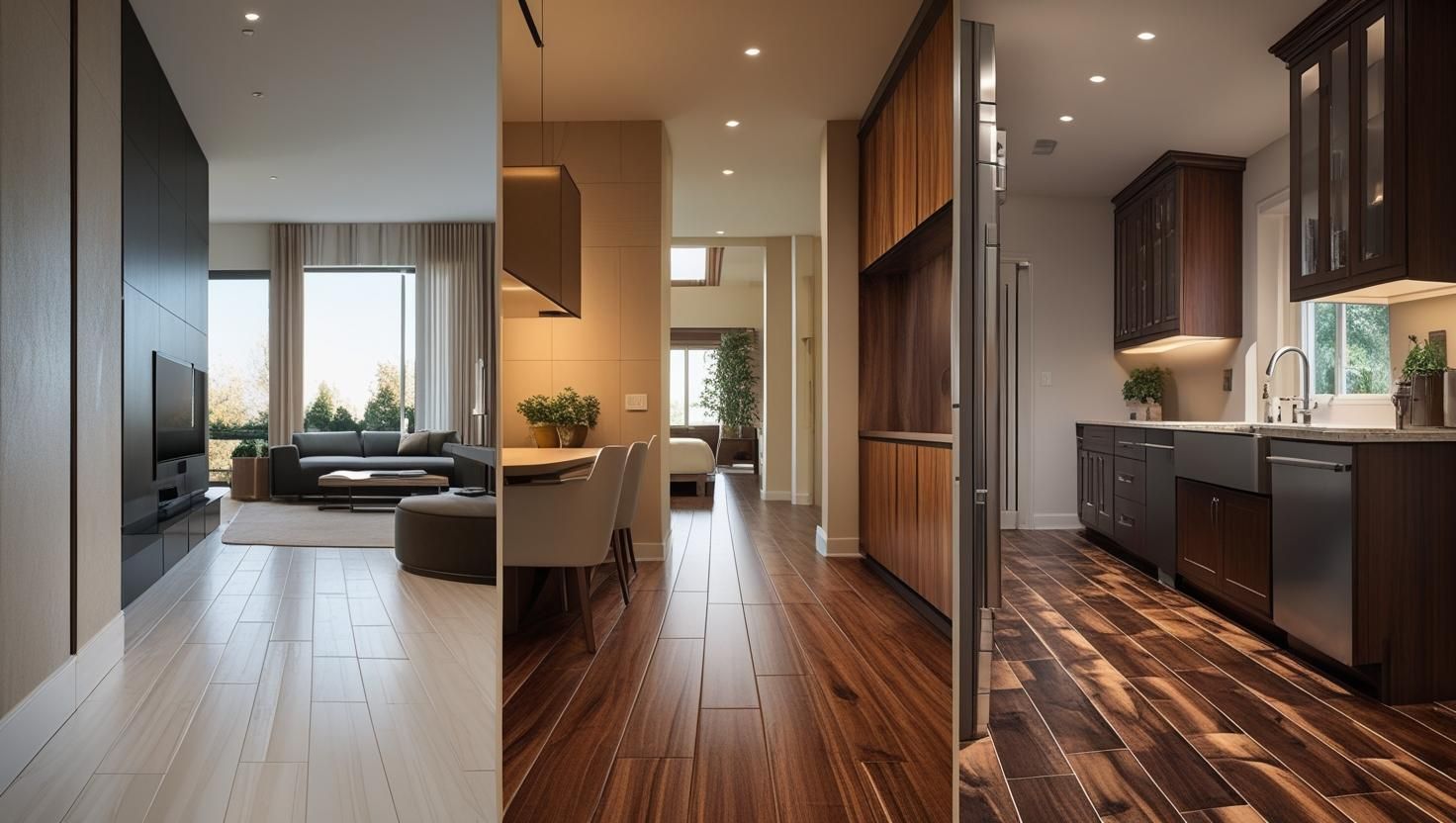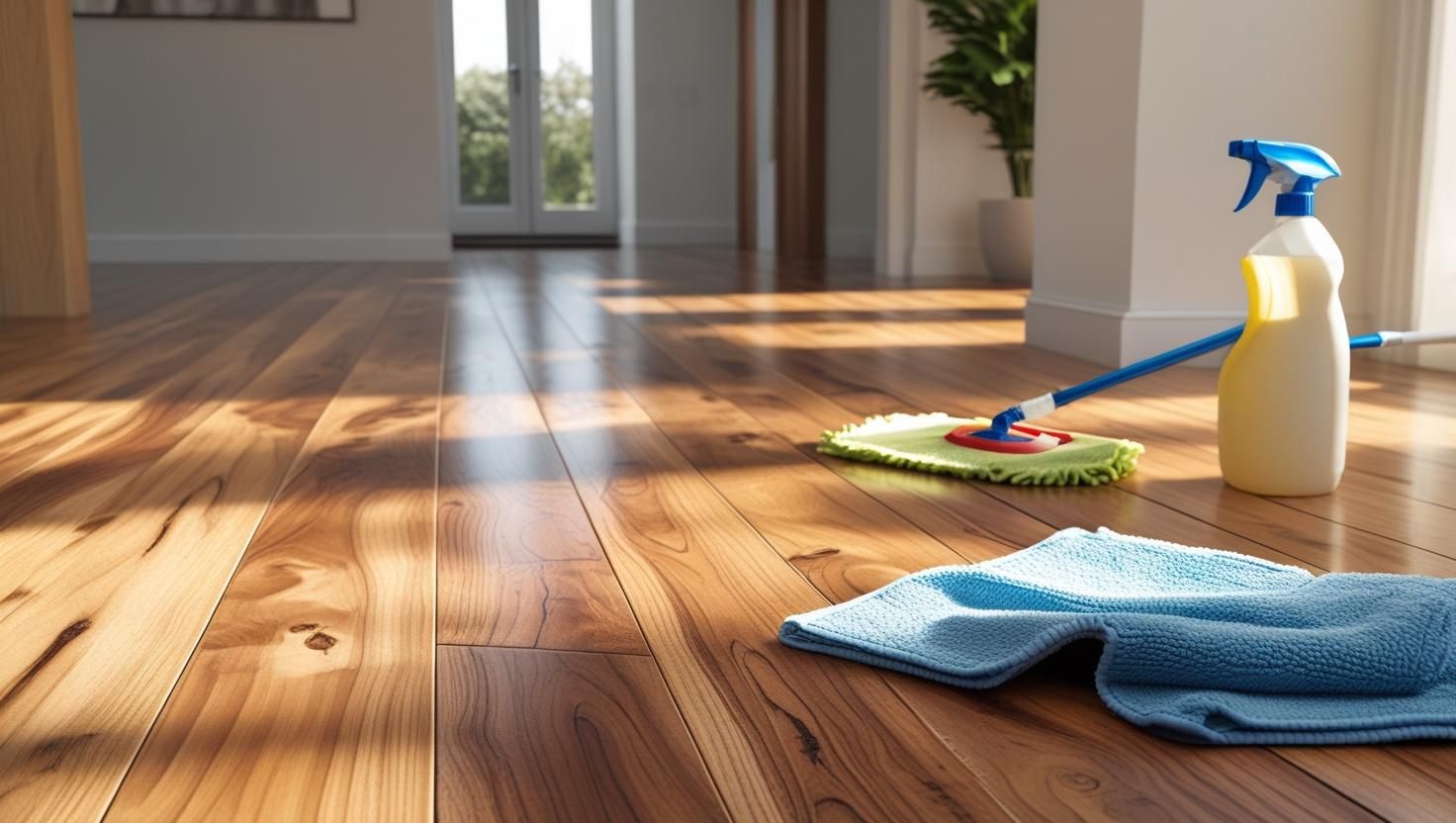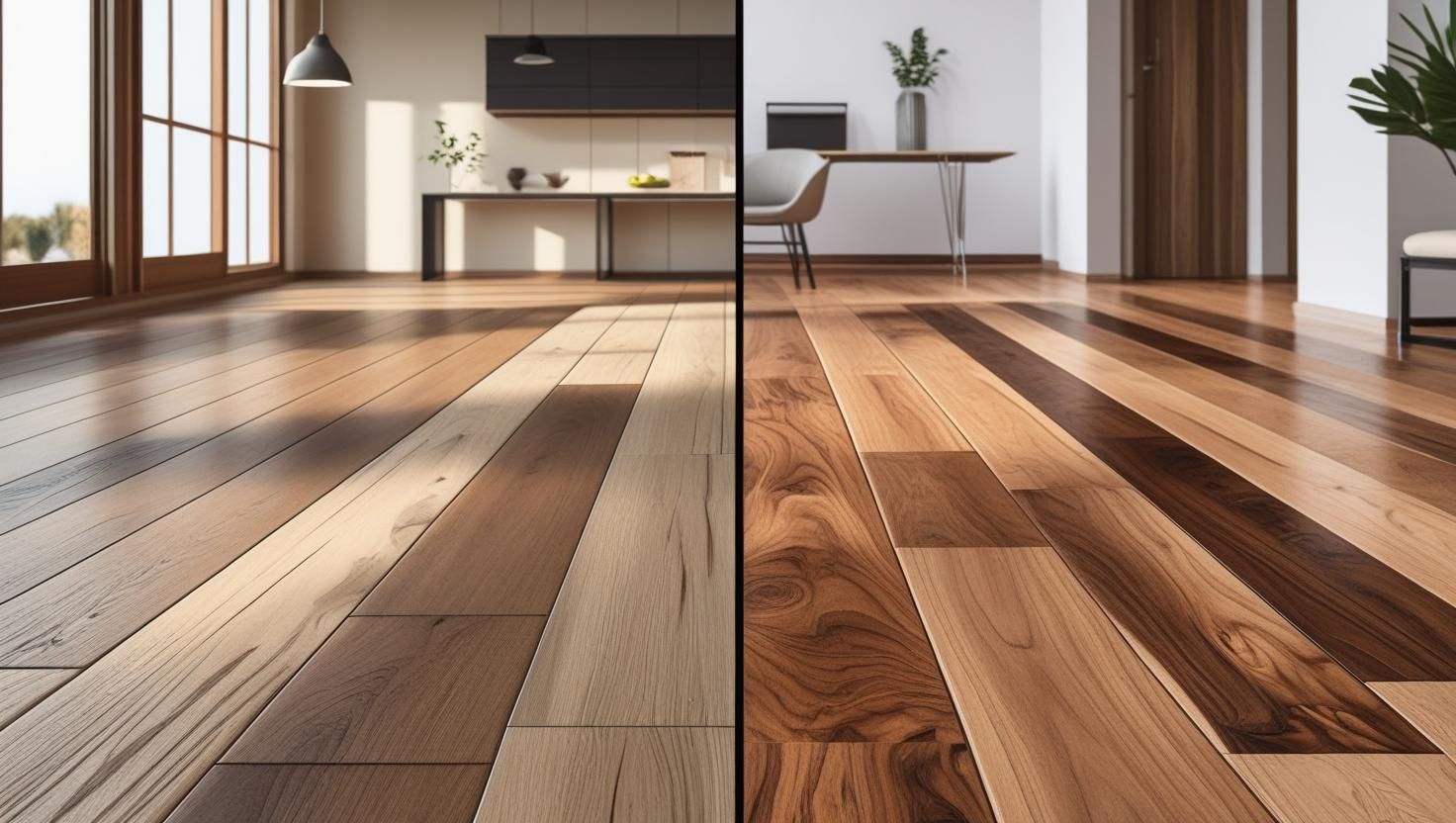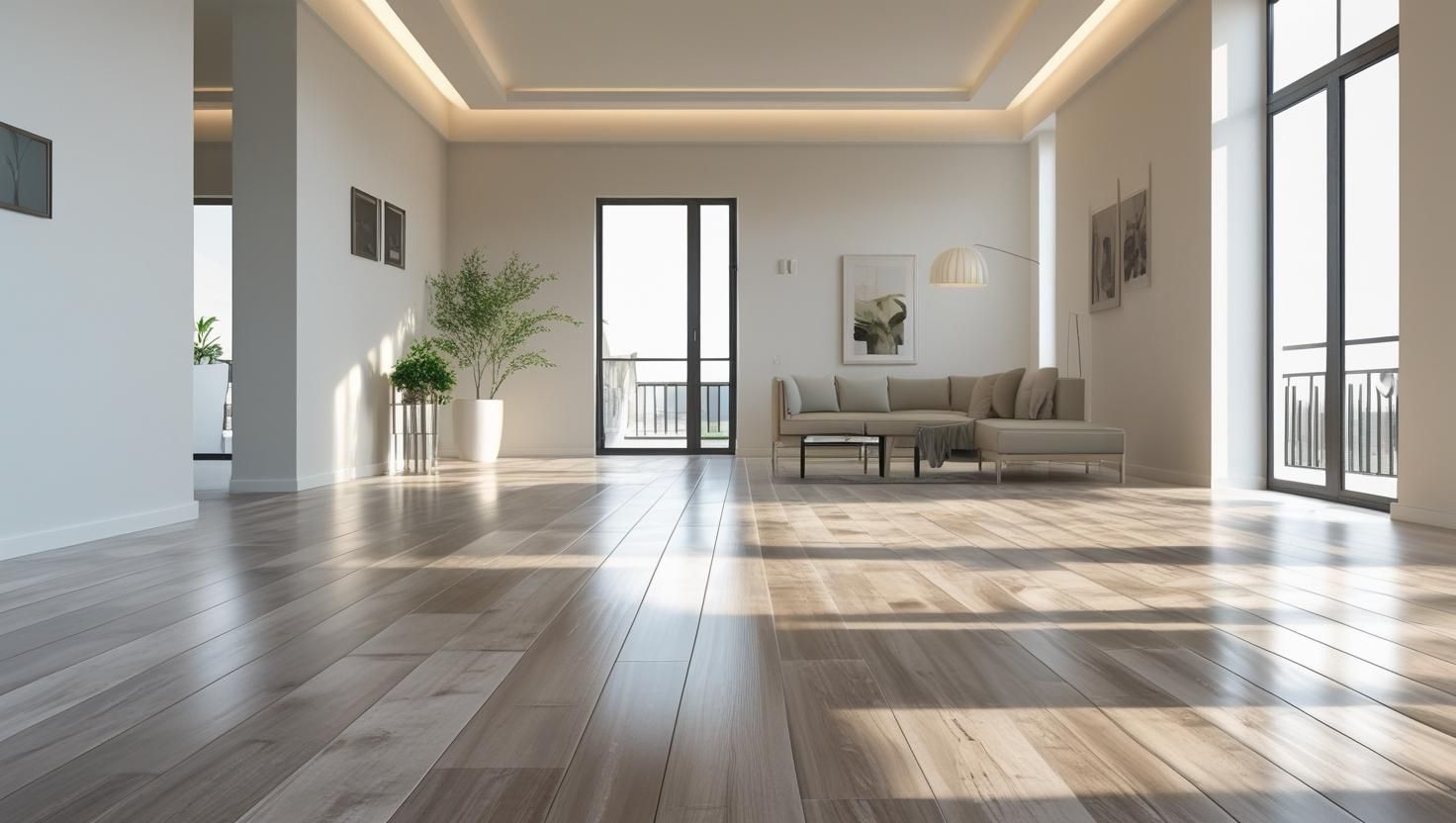If your bathroom floor feels a bit... meh 😕, you are not alone. A lot of us live with tiles that are outdated, slippery, or just plain boring. But now you have got way more options than you might think.
There is porcelain that handles water like a pro, tiles that look just like warm wood (minus the maintenance), and small mosaics that actually help prevent slipping.
It’s not just about how your bathroom floor looks; it’s about how it works, too.
Good high-quality tiles should handle daily splashes, steamy showers, and whatever chaos happens during rushed mornings. It should also be easy to clean, tough enough to last, and make the whole room feel better, whether that’s bigger, cozier, or more put-together.
In this post, we have shared some of the best bathroom floor tile ideas, plus what to keep in mind before you make your pick. But first, let's know if it's a good option.
Is Tile Flooring a Good Idea for a Bathroom?
Why It’s Often a Great Choice |
Potential Drawbacks & Mitigations |
| Ceramic and porcelain are highly resistant to moisture, making them perfect for wet areas. |
Glossy/tile with low texture can be slippery when wet; opt for matte or textured finishes. |
| Tile stands up to heavy foot traffic, lasts decades, and withstands stains. |
Grout can stain or harbor mildew; sealing and regular cleaning are essential. |
| Easy to clean; resistant to mold, mildew, and bacteria. |
|
| Available in countless colors, shapes (hex, plank, mosaic), textures, and styles |
|
| Made from natural materials, it boosts home value. |
Top 18 Bathroom Floor Tile Ideas That Blend Style, Safety, and Everyday Durability
We have listed the most popular bathroom tile ideas that offer water-resistant and heat-absorbent qualities.
1. Porcelain Tile
 iStock/JensBarslund
iStock/JensBarslundBest For: High-moisture areas, walk-in showers, radiant heated floors.
Porcelain tile is a dense, vitrified material fired at temperatures exceeding 1200°C, giving it an extremely low water absorption rate (<0.5%). Its composition makes it ideal for continuous wet zones and radiant heating systems.
Most porcelain tiles carry a PEI rating of 4–5, indicating excellent abrasion resistance. Rectified edges allow minimal grout lines for a seamless floor plane. Textured surface finishes are recommended anti-slip tiles for the bathroom floor.
Porcelain tile is tough. It won’t absorb much water, and it holds up well in rooms where people walk a lot. Warm floors? No problem. Its color body feature hides wear and tear. Still, it’s heavier than many tiles. That weight makes lifting and setting it tougher. Cutting it right takes diamond tools, which means home installers might struggle a bit more.
Check Out Related Options:
2. Ceramic Tile
 iStock/asbe
iStock/asbeBest For: Guest bathrooms, powder rooms, and homes on a tighter renovation budget.
Refined clay is shaped into ceramic tile and fired at lower heat levels, creating a more open, porous texture than porcelain. Most ceramic options have a PEI rating of around 3 or 4. This makes them strong enough for regular and even heavier household traffic.
A protective glaze coats most tiles, which helps stop stains and keeps the surface looking clean. Cutting and installing ceramic is simpler than working with porcelain. This makes it a good choice if you plan to renovate on your own. Always check that the tile is made for floors; some tiles are only meant for walls and don’t have the grip or strength needed underfoot.
Ceramic tile costs less and brings different surface styles like flat, glossy, or textured. It pairs well with heated flooring. Since it's not as hard as porcelain, it might chip if hit or dropped.
But you’ll find fewer styles with clean, sharp edges. That matters if you want tight seams between tiles. Always check its rating. Some ceramic tiles are made only for walls; they may not hold up on the floor or prevent slipping.
Explore Further Options:
3. Vinyl Waterproof Tiles (LVT – Luxury Vinyl Tile)
 iStock/KristianSeptimiusKrogh
iStock/KristianSeptimiusKroghBest For: Luxury bathrooms, spa-style designs, high-end renovations.
Strong, reliable flooring is a must in any bathroom space. Waterproof Luxury Vinyl flooring has a design built in layers to deliver both style and performance. Its waterproof PVC center keeps moisture from seeping through. Right above that is a vivid image layer that shows off wood, ceramic, or stone looks. On the very top is a urethane layer that shields the floor from damage.
This layered bathroom flooring vinyl tile makes the floor strong and fully waterproof. The thickness of the wear layer, commonly between 12 and 28 mils, plays a big part in how much protection the floor can take before showing marks. There are different types of Vinyl flooring options, and LVT offers a softer, warmer feel than traditional tile. Light embossing on the top layer helps feet grip better, reducing the chance of slips.
Luxury vinyl tile keeps your floors dry, so it's perfect for bathrooms, laundry rooms, and kitchens. It feels nice to walk on, much softer and quieter than stone or ceramic. You can lay it down with glue or snap the pieces together, which makes setup pretty quick. The patterns look very close to real wood or stone, but you don’t have to spend much time cleaning them.
A lot of LVT types also give a little more grip, so slipping is less likely. But be careful. heat can affect it, and the floor underneath needs to be smooth. If it's not, flaws can show through.
Find More Options:
4. Natural Stone Tile
 iStock/asbe
iStock/asbeBest For: Luxury bathrooms, spa-style designs, high-end renovations.
Crafted from marble, slate, granite, and travertine, natural stone tiles bring their own patterns and textures into a space. They are cut precisely after quarrying. Since these stones have tiny pores, they must be sealed at the start and resealed from time to time.
Different stones feel and behave differently. Slate keeps your footing secure even when wet. Polished marble scratches more easily. The finish you choose, polished, tumbled, or honed, will affect how shiny or slip-resistant the tile is.
Natural stone floors give a real, special look that makes your home feel more valuable. They keep rooms cool by holding in less heat, which is great for warm places. Granite stone is also very strong and can handle heavy weights without damage. You can choose from different textures and finishes, and some types help reduce slipping, especially the rough or tumbled ones.
But be ready for a higher price, both for the stone and the work to install it. Some stones, like marble and limestone, don’t react well to acidic cleaners, so you’ll need to clean them gently to keep them looking nice and lasting longer.
Take A Look At More Options:
5. Glass Tile
 iStock/Joe Hendrickson
iStock/Joe HendricksonBest For: Accent floors, powder rooms, artistic layouts.
Glass tile is made by heating up sand mixed with recycled glass until it becomes solid sheets or tiny mosaic pieces. After that, it’s cut or shaped into the sizes needed. While many homeowners install glass tile on walls, some styles work well for flooring as long as they meet slip resistance levels, such as R10 or more.
The shiny surface catches and spreads light, which helps a bathroom look open and roomy. Choosing a textured or frosted tile can make walking safer because it gives better traction. In contrast, polished glass tends to be slick if any water is present.
Glass tiles don’t absorb water and won’t stain easily. They’re simple to wipe down, which helps keep mold away, a clean and healthy choice. These tiles bounce light around the room, making small bathrooms feel more open. Their bright colors give a cool, modern feel. But they do cost more, both to buy and to put in. Installing them takes care; any slip can leave glue marks behind the see-through tile.
Browse More Selections:
6. Cement Tiles (Encaustic)
 iStock/JazzIRT
iStock/JazzIRTBest For: Vintage-inspired, eclectic, or Mediterranean-themed bathrooms.
Artisans craft cement tiles by pressing a mix of cement and pigments into molds. This process makes patterns that run through the entire tile body. Each tile has a natural matte surface without any glaze, giving it a slip-resistant quality. Wet areas often benefit from this kind of finish.
Sealing plays a big part because these tiles soak up liquids. It’s best to seal them before grouting and right after. Over time, resealing every so often keeps stains from setting in. When cared for well, they develop a rich patina that grows more appealing as they age.
Cement tile gives a true handmade feel. The bold colors and special patterns bring warmth and style to any room. The surface feels naturally smooth but still grips well underfoot. It works great if you have radiant floor heating.
But this type of tile is heavier and thicker than ceramic or porcelain. That can make setting it up harder. It also reacts more to harsh cleaners or spills, which may leave marks. You’ll need to seal it and clean it with care to keep it looking fresh.
Explore More Choices:
7. Pebble Stone/Mosaic Tile
 iStock/tulcarion
iStock/tulcarionBest For: Shower floors, spa-like bathrooms, nature-inspired designs.
Pebble stone tiles and mosaics come attached to mesh sheets that make installation simpler. Natural pebbles often go through tumbling, so their sharp edges get smoothed out. Mosaics might use pieces of porcelain, glass, or stone chips to create different looks.
One unique feature is the change in surface height, which helps stop slipping and often reaches R12 slip ratings or even better. It is important to take time during grouting so every gap gets filled and the tiles have solid, steady support. Regular sealing is recommended for natural stone pebbles to protect against staining.
The rough surface of pebble tile helps reduce slipping, which is why it's used in wet rooms and shower areas. It adds a peaceful, spa-style touch to bathrooms. Its flexible sheet design fits nicely around curves and slopes without much trouble.
When using real stone, sealing is important to keep water out and avoid stains. If not installed the right way, the floor might feel uneven under your feet, so careful handling during setup is very important.
Take A Look At More Options:
Trending Bathroom Flooring Ideas - Styles & Patterns
A tile’s pattern and layout are just as important as the material itself. Here are some of the most popular looks right now:
8. Hexagon Bathroom Floor Tile
 iStock/NelleG
iStock/NelleGBest For: Defining zones and blending classic with modern style.
Hexagonal tiles deliver a geometric, honeycomb appearance that bridges traditional charm with contemporary style. They’re commonly produced in matte porcelain with slip-resistance ratings ideal for bathrooms.
This pattern defines zones visually, such as separating wet and dry areas. However, installing hex tiles requires meticulous planning and precise edge cuts to fit perimeter walls cleanly.
Hexagon tile adds a unique look that feels both warm and fresh. It fits into many bathroom layouts and helps mark out different sections in larger spaces, like where the water flows and where it doesn’t. Laying this tile takes time and care. Around the edges, custom cuts are often needed to keep everything even.
Explore These Options:
9. Mosaic Tile Sheets
 iStock/asbe
iStock/asbeBest For: Walk-in showers and sloped floors needing top slip resistance.
Mosaic tile sheets feature small-format tiles mounted on mesh backings for easier installation on floors and slopes. They provide excellent slip resistance and flexibility for shower pans requiring drainage gradients.
Often used for accents and insets, mosaics demand epoxy grout to resist mold. Grout lines are numerous, so sealing and detailed cleaning become ongoing considerations.
Mosaic tile works well for walk-in showers. It adjusts easily to the slope needed for proper drainage. The small tiles are beautifully placed on a flexible mesh, so it’s easy to place them in small spots or use them as patterns within larger designs. For wet areas, regular grout may not hold up. Epoxy grout is often the better pick. It holds firm, fights moisture, and helps prevent mold from growing.
Take A Look At More Options:
10. Wood-Look Plank Tile
 iStock/onurdongel
iStock/onurdongelBest For: Adding warmth with waterproof performance in spa-like baths.
Wood-look plank tiles copy the look of real hardwood by using sharp inkjet prints on strong porcelain surfaces. These tiles feel warm and natural in a room. They do not soak up water or get stained easily.
You can also use them with underfloor heating if you want extra comfort. It is important to level the subfloor carefully before laying it. This helps prevent lippage, which means edges sticking up. When you set the layout, keep plank offsets around 33% or less. That keeps the floor even and avoids patterns that look off.
Wood-look tile brings the warm, homey feel of real wood but doesn’t mind water or daily wear. That’s why it works great in bathrooms. It stays strong, holds up well over time, and even feels nice with heated floors. To lay it down right, the floor underneath might need some smoothing if it's not flat.
Browse More Options:
11. Patterned Encaustic Cement-Look Tiles

Best For: Bold statement floors and vintage-inspired designs.
Patterned encaustic cement-look tiles deliver vintage geometric motifs or bold color blocks perfect for statement floors. Modern versions are porcelain, offering low porosity and easier maintenance than true cement.
For authentic cement, sealing before and after grouting is mandatory. Aligning repeating designs demands precision during layout to ensure seamless visual flow across the entire space. Patterned tile brings life to powder rooms and bathroom corners. Its bold look adds a fun, eye-catching touch.
These tiles work great for feature areas that need something extra. Real cement tiles need sealing to keep out water and stains. Lining up the design the right way takes some planning. Repeating patterns need extra attention, so the layout must be done carefully.
Explore More Options:
12. Diagonal Layout
 iStock/PC Photography
iStock/PC PhotographyBest For: Making small bathrooms look larger and masking uneven walls.
A diagonal layout rotates square tiles 45 degrees relative to the walls, creating a dynamic grid that visually enlarges compact bathrooms. This configuration helps mask minor irregularities in room dimensions and adds interest to simple tile styles.
Precision is essential: accurate reference lines and extra cuts increase installation complexity and require additional tile quantities to complete edges.
A diagonal tile layout makes small bathrooms feel bigger. The eye moves along the angles, which stretches the space visually also helps hide small flaws in the wall or floor shape. But to get that clean, balanced look, every tile must follow exact layout lines. This matters most in tight or narrow bathrooms, where any mistake shows quickly.
Look At More Options:
13. Grid Layout with Contrasting Grout
 iStock/Ergin Yalcin
iStock/Ergin YalcinBest For: Clean, modern bathrooms with strong geometric lines
This layout sets square or rectangular tiles in straight lines, emphasizing clean geometry with high-contrast grout. Dark grout outlines each tile, highlighting patterns and adding modern definition.
The grid arrangement simplifies installation compared to angled patterns but demands careful sealing of grout joints to prevent staining. Subfloor flatness is vital to maintain tight, uniform joints.
Grid tile layouts bring out the shape of every tile. The look is clean and modern. Many people like this pattern because it’s easier to install than tricky, angled designs. It works well in spaces with a simple, updated style. Dark grout can look sharp next to light tiles, but it needs careful sealing. If not sealed properly, the grout might leave marks on nearby tiles.
View Related Choices:
Small Bathroom Floor Tile Ideas
For your small bathroom, you need something better that suits your space.
14. Terrazzo Tile
 iStock/onurdongel
iStock/onurdongelBest For: Mid-century modern, minimalist, and contemporary small bathrooms.
Terrazzo tiles are made using pieces of quartz, marble, or granite set into resin or cement bases. This method produces a speckled, sturdy surface ideal for tight bathrooms. A glossy finish bounces light across walls and floors, giving a more spacious look. Cement-based terrazzo should be sealed to block moisture. Resin tiles are built to resist water on their own.
These tiles come in soft neutrals or brighter shades to match mid-century themes or a clean, simple look. Their solid build gives great.
Terrazzo holds up well and doesn’t break down easily, even under heavy use. That’s why it lasts for years. Its speckled surface looks clean even when there’s dust or water marks. This helps the floor stay neat without much effort. Cement versions can soak up water because they’re more open. Resin terrazzo is different. It holds less moisture and keeps water from seeping in, which makes it a better fit for bathrooms, kitchens, or other damp spaces.
Review These Options:
15. Metallic Porcelain Tile
 iStock/owngarden
iStock/owngardenBest For: Modern industrial designs or small powder rooms needing impact.
Metallic porcelain tiles replicate brushed steel, oxidized iron, or bronze finishes on a rectified porcelain body. They bring a modern industrial edge to bathrooms without the maintenance issues of real metal.
Available in matte textures for slip resistance, these tiles reflect light beautifully, helping compact spaces feel more open. Their low water absorption and high durability suit wet environments. For best results, pair them with non-sanded grout to protect the surface from scratching.
Metal-look tiles bring in that cool, modern vibe people love in city-style bathrooms. You won’t have to deal with rust or polishing. They don’t soak up water and are easy to wipe down. To keep their surface smooth and avoid scratches, use non-sanded grout when installing.
Click For More Selections:
16. Quarry Tile
 iStock/cgnznt144
iStock/cgnznt144Best For: Traditional or craftsman-style small bathrooms needing a warm texture.
Quarry tiles are unglazed, extruded tiles made from dense natural clays fired at high temperatures. Their textured, earthy surfaces offer excellent slip resistance, ideal for traditional or craftsman-style bathrooms.
Commonly available in warm reds, browns, and grays, quarry tiles create a rustic feel while standing up to heavy wear. They require sealing to improve stain resistance and ease of cleaning. Their inherent durability, natural traction, and thermal mass make them perfect for small bathroom floors.
Quarry tile adds a cozy, old-style charm to bathrooms. Its deep reds, browns, and grays give the space an earthy, grounded look. It holds heat well, which makes it a solid choice for heated floors. But you won’t find as many colors as you would with glazed tiles, so that can limit how creative you get with the design.
Find More Options:
17. Textured Slip-Resistant Porcelain Mosaic
 iStock/onurdongel
iStock/onurdongelBest For: Barrier-free showers and compact bathrooms requiring maximum safety.
Textured slip-resistant porcelain mosaics feature micro-textured surfaces and abundant grout lines to deliver exceptional traction, perfect for barrier-free showers and safety-focused bathrooms. Small-format tiles (1×1 or 2×2 inches) mounted on mesh sheets conform to slopes and drains effortlessly.
Dense porcelain construction ensures minimal water absorption, while matte finishes meet R11 slip-resistance standards. They’re available in neutral tones or contrasting patterns that define zones visually without overwhelming tight spaces. Epoxy grout enhances hygiene and durability.
Textured slip-resistant porcelain mosaic tiles work great in wet spaces like showers. Their many grout lines give a solid grip underfoot. Small tile pieces easily fit around slopes or smooth, no-step entries. But because there’s more grout, it needs regular cleaning to stop mildew from growing.
Explore More Choices:
18. 3D Geometric Porcelain Tile

Best For: Contemporary small bathrooms that need textural interest without clutter.
3D geometric porcelain tiles feature precision-molded relief patterns that add depth and texture to compact bathrooms. These tiles create subtle shadow play that enhances light distribution, making small spaces feel dynamic yet uncluttered.
Most of the time, these tiles come in mid-sized squares, such as 8×8 or 10×10 inches. Their shape fits well in compact areas and keeps everything looking even. A matte finish that resists slipping adds extra safety when you walk. The tough porcelain handles moisture and wear without trouble. When it’s time to seal the joints, epoxy grout does a great job sealing space and cutting down on upkeep.
3D geometric porcelain tile brings a bold, eye-catching look to any space. Its design gives walls and floors a layered feel, almost like art, without needing different types of tile. The tile is tough, long-lasting, and doesn’t absorb much water. But to make it look neat and smooth across the surface, the pattern must be lined up carefully during installation.
Browse More Selections:
Tips for Choosing the Right Bathroom Floor Tiles
Don’t choose your bathroom flooring tile without checking these important considerations.
1. Tile Size & Layout Ideas
Choose tile size based on room scale and subfloor flatness.
Large-format tiles (e.g., 24×24") reduce grout joints, making small bathrooms feel bigger, but require perfect leveling to prevent lippage.
Smaller tiles (like mosaics) contour better to slopes and drains, offering safer traction in wet zones.
2. Grout Options & Considerations
Select grout for water resistance and appearance.
- Epoxy grout is stainproof and ideal for wet bathrooms, though costlier.
- Cementitious grout needs sealing to resist mildew.
Joint width impacts maintenance; narrow joints look modern but demand precise tile sizing, while wider joints tolerate slight tile variation and movement.
3. Color Ideas for Bathroom Floor Tiles
Light colors like soft gray, ivory, or sand reflect more light, visually enlarging compact bathrooms.
- Dark tiles can ground a space but highlight dust and soap residue.
- Consider slip-resistant matte finishes over glossy ones.
- Consistent tone or subtle veining creates a clean, unified look across the floor.
4. Your Budget
Factor in not just tile price per square foot but also underlayment, grout, sealers, and labor.
- Porcelain and natural stone cost more upfront but last for decades.
- Vinyl and ceramic are budget-friendly with easier DIY installation.
Always budget an extra 10–15% material for cuts, waste, and future repairs.
FAQs
How Much Does it Cost to Install Bathroom Floor Tiles?
The installation cost of bathroom tiles will be based on the type of tile design you will use and the labor hire. Certain tiles can be installed easily, whereas certain might require the help of professionals.
How Long Do Bathroom Floor Tiles Typically Last?
Tiles made of ceramic and porcelain are strong enough to last up to 2-5 decades, provided that they are installed properly and taken good care of. Natural stone can be very powerful and beautiful, too, when it is properly charged and wiped often. Vinyl tiles do not last so long and are typically tossed in the trash after 10-15 years.
Is Tile Always Better Than Vinyl or LVP?
Tile, especially porcelain, is more waterproof and durable than vinyl products, though LVP is easier to install and softer underfoot.
Ceramic or porcelain, which is Better?
Porcelain is denser and less porous, making it the superior and more durable choice for bathrooms.
The Bottom Line
Is it easier now to pick the best bathroom tile flooring? Many people don’t realize that slip ratings, grout styles, and strength matter just as much as the way tiles look. Every choice shapes a safe and lasting bathroom that feels right in your home. The final pick often relies on your choice and lifestyle.
Want assistance in finalizing your design, or are you left with queries? Dial (833) 378-4559. and talk to specialists. They will make it possible to have a floor that is suitable for your style and withstands the everyday load.



